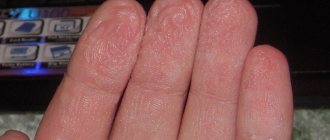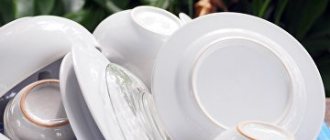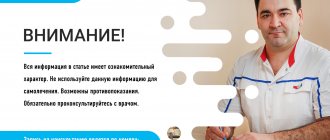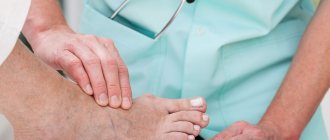They are often confused with dry calluses due to their external similarity and localization features. Incorrect treatment or ignoring the problem leads to relapses, severe pain, and proliferation of tumors. Getting rid of plantar warts is recommended in clinical settings. Doing this at home is much more difficult.
What are the most common warts?
Most often (up to 70% of all cases), patients report warts that bother them, and the majority of patients are school-age children. Warts are also found in 20% of students. Plantar warts are more common in adults (34% of cases), as opposed to flat warts, which are again more common in children (4% of all warts).
An experienced dermatologist can easily determine the type of wart during a consultation. However, in rare cases, especially if the wart is injured, it is difficult to diagnose it only by examination, and then the doctor can perform a biopsy of the derivative and histological examination.
What does it look like?
Warts are small, dry, flesh-colored lumps. They have a rough surface and are sometimes painful. On the hands, this can lead to a pronounced cosmetic defect.
When warts appear on the feet, severe pain appears, making it difficult to walk. Another type of wart, genital warts, develops on the genitals. This can make intimate relationships difficult. It is important to note that in women, condylomas of this localization can be caused by strains of the virus that increase the risk of cervical cancer.
Such situations require immediate treatment.
Can warts cause complications?
Warts usually do not cause complications unless they grow, become painful when walking, and cause psychological discomfort for aesthetic reasons. In rare cases, injuries can spread to adjacent areas.
Patients with a significant defect in the immune system (for example, immunodeficiency of various origins) retain the theoretical possibility of malignant formation of a simple wart, although this does not occur in everyday practice. This is in contrast to genital warts, which can also be caused by oncogenic types of human papillomavirus (HPV). Thus, to avoid the complications listed above, radical removal of warts is recommended in all cases.
Where do plantar warts come from?
HPV enters the body from the outside. Pathogens love moist environments. You can become infected by wearing someone else's shoes, neglecting the rules of hygiene in pedicure salons, baths, saunas or swimming pools. A virus suppressed by the immune system may not manifest itself for years. But in a weakened body, viral particles begin to divide very quickly. The propagation of plantar strains is facilitated by:
- increased sweating of the feet;
- uncomfortable tight shoes;
- microcracks in the skin;
- fungal infections of the feet;
- circulatory disorders due to joint deformation: arthritis, arthrosis, flat feet.
Within the epidermis, the virus first infects the basal layer. Then it provokes the proliferation of keratinized particles, forming characteristic hard plaques on the skin.
The main symptom of this form of HPV is severe pain while walking. The roots reaching the lower layer of the dermis constantly injure the nerve endings. Many patients have to give up their usual shoes and use thick, soft insoles to alleviate the pain.
Wart removal
Although scientific literature suggests that with a good immune system, warts can disappear on their own within a few years, medical practice shows the opposite. The main problem with treating warts is that there is currently no method or medicine to remove the virus itself, so a doctor cannot guarantee a 100% cure. All treatment is aimed at removing the wart itself, but does not prevent HPV recurrence.
Basic ways to remove warts:
- Laser;
- Cryodestruction with liquid nitrogen;
- Medicines;
- Removing warts surgically.
Ideally, wart removal should be carried out by an experienced dermatologist, since incorrectly prescribed treatment may not only not help, but also worsen the situation. Warts are treated only by radical removal, which, as already mentioned, can be carried out with a surgical laser, liquid nitrogen or special drugs.
Our center uses any of the above methods for removing warts. In each case, the treatment method is selected individually.
Contraindications to laser treatment
- infections and exacerbation of chronic pathologies;
- diabetes mellitus in the stage of decompensation;
- epilepsy and mental disorders;
- history of oncological pathologies;
- pregnancy and lactation;
- exacerbation of herpes.
| Cost of removing plantar warts | |
| Plantar warts up to 5 mm | 2950 rub. |
| Plantar warts from 5 to 10 mm | 3750 rub. |
| Plantar wart from 10 mm to 3 cm | 4900 rub. |
Sign up for a consultation
Laser wart removal
The procedure is performed under local anesthesia after the doctor has administered painkillers. Depending on the size of the derivative, laser removal of warts takes up to 15 minutes. After the procedure, a bandage is applied and medications are prescribed to lubricate the wound as it heals.
Laser wart removal
The main advantage of laser wart removal is that just one procedure is enough to make the wart that bothers you disappear forever. In addition, this treatment method is the most common among patients and has the best reviews, since laser warts are removed from:
- faces;
- palms and feet;
- genitals.
In what cases is tumor removal prescribed?
Experts recommend seeking help if there are indications:
- pain when wearing tight shoes or walking for a long time;
- bleeding in the affected area;
- uneven coloring of the neoplasm;
- rapid growth, association of individual lesions into masses.
If you still have doubts about whether it is worth removing the tumors, seek the advice of a specialist.
Removing warts with nitrogen
This is an alternative to laser wart removal. The method is also quite popular, but usually requires several procedures, they are quite painful, and after cryodestruction with liquid nitrogen a painful bubble forms. Therefore, removal of condylomas with liquid nitrogen is recommended only for older children and adults.
Removing warts with nitrogen
Cryodestruction is repeated every 2-3 weeks until the final disappearance of condylomas. Usually 6 sessions of liquid nitrogen treatment are sufficient, but if the wart still persists, other treatment options are considered. In addition, destruction with liquid nitrogen is not suitable in cases where the wart affects the area of the fingers and thighs.
What is the best way to treat?
Warts can be removed in almost any way. The surgical method, electrocoagulation, laser and cryodestruction, as well as radio wave surgery are used.
Radio wave surgery
, in my opinion, is a more effective method that allows you to remove wart tissue under visual control. When using this method, the tissue is not burned, but is excised along with a small piece of healthy skin. Thus, the likelihood of warts reappearing becomes minimal.
See all photos before and after removal
Histological examination during removal is mandatory if there is the slightest doubt.
Removing warts with medication
Destroying acids such as salicylic acid, trichloroacetic acid, urea and other special medicines are also wart removers. Any pharmacy offers a fairly wide selection of such drugs.
Salicylic acid, urea softens the top layer of the wart, in addition, stimulates the local immune response, and hence the disappearance of the wart. But when choosing to treat warts with medications, you need to be patient, because even if you use the product in strict accordance with the instructions, the effect becomes noticeable only after a few months.
Removing warts with medication
In addition, constant use of the drug is required according to a special scheme in compliance with certain skin care rules. Sometimes it causes discomfort to the patient and also the medicine has side effects such as skin irritation, redness, etc.
Therefore, many patients make a better decision - see a dermatologist and remove warts in faster and safer ways.
Symptoms and types of warts on the foot
A plantar wart appears as a callus-like thickening with a stratum corneum layer of skin. It interferes with walking and causes pain. The passive state is characterized by slow reproduction, not reaching the stratum corneum of the epithelium, so this condition does not manifest itself externally.
The active state is characterized by the fact that the virus develops rapidly and, rising to the upper layers of the epidermis, manifests itself in numerous symptoms. The plantar wart is also called the spinous wart, chicken wart. The virus enters during its contact with the skin through cuts and abrasions in the outer layer of the skin:
- First, a small yellowish-gray papule with an uneven surface appears.
- Gradually, the small element becomes dense and acquires a dirty color.
From the inside, a plantar wart looks like fused papillae of different sizes with a pinkish tint. Additional capillary vessels form there, causing bleeding if you catch a wart.
Post-procedure care
For a quick and complete recovery, high-quality postoperative care is necessary.
- The wound after surgery should not come into contact with water for at least 2-3 days.
- Do not remove the crust that has formed (it will fall off on its own).
- Treat the wound with an antiseptic.
- Protect the manipulation site from injury.
- Wounds and new skin formed must be protected from ultraviolet radiation.
- The surgical area should not be shaved or epilated until complete healing.
Bibliography:
1) Cockayne S, Hewitt C, Hicks K, Jayakody S, Kang'ombe AR, Stamuli E, Turner G, Thomas K, Curran M, Denby G, Hashmi F, McIntosh C, McLarnon N, Torgerson D, Watt I; EVerT Team. Cryotherapy versus salicylic acid for the treatment of plantar warts (verrucae): a randomized controlled trial. BMJ. 2011 Jun 7; 342:d3271. doi: 10.1136/bmj.d3271.
2) Dall'oglio F, D'Amico V, Nasca MR, Micali G. Treatment of cutaneous warts: an evidence-based review. Am J Clin Dermatol. 2012 Apr 1; 13(2): 73-96. doi: 10.2165/11594610-000000000-00000.
3) Nguyen NV, Burkhart CG. Cryosurgical treatment of warts: dimethyl ether and propane versus liquid nitrogen – case report and review of the literature. J Drugs Dermatol. Oct 2011; 10(10): 1174-6.
4) Ahn CS, Huang WW. Imiquimod in the treatment of cutaneous warts: an evidence-based review. Am J Clin Dermatol. 2014 Oct; 15(5): 387-99. doi:10.1007/s40257-014-0093-5.
Preparation for the procedure
Before laser removal, a thorough examination and examination of the tumor is carried out to ensure its benign nature. If the tumor contains malignant cells, the laser cannot be used. Wart removal will be carried out using a classic operation with removal of the tumor and part of the healthy tissue. Laser surgery is not performed if during the operation it is necessary to take biological material for subsequent research.
In addition to examining the mole, the doctor surveys the patient about possible contraindications to the procedure, and also conducts a number of studies (blood tests).
What is the essence of the method?
A directed laser beam increases the temperature in tissue cells and causes their destruction, resulting in tissue necrosis and death. The doctor can adjust the wavelength and degree of impact, so the laser action is directed only at the tissue of the formation, without affecting or injuring healthy tissue. Due to the high temperature, nearby vessels coagulate and the risk of bleeding is minimal. After the procedure, a small wound remains, then a crust forms, which disappears after a week on its own.
Folk remedies
Since you can remove a wart at home using traditional medicine recipes, many people turn to them. They are more economical and have been tested for many generations, so they often inspire more trust than pharmaceutical drugs. Warts can be treated using the following popular remedies:
- One of the most effective and simplest ways to cure a wart is to get rid of it using table vinegar. Since this product is quite aggressive, it must be used carefully so as not to touch adjacent healthy skin. It is necessary to mix flour with 1 or 3 drops of vinegar to obtain a thick consistency. The mixture must be applied to the wart and wait until the product dries, then wrap the area with a bandage and leave for 12 hours. After this time, the bandage can be removed; it will come off along with the growth. This product is not recommended for use on the face, as it may leave pigment spots.
- The most popular folk way to get rid of warts is treatment with celandine juice. To do this, you need to break the stem of the plant and treat the wart with its juice, making sure that it does not get on healthy skin. You can use the product several times a day until the tumor is completely eliminated.
- To remove a wart at home, you can use garlic, as it is an antiviral agent, but be aware that it can cause burning and redness, especially on sensitive skin. There are many variations on how to treat warts with garlic: firstly, you can apply a cut of a clove to them, wrapping them in a bandage, secondly, rub in the juice several times a day, thirdly, grind the clove to a paste and make a compress. As a rule, removal of tumors takes no more than two weeks.
- Folk recipes include several options for how to remove a wart with potatoes. To do this, you need to peel a small tuber and move the cut along the papilloma. After this, the potatoes must be buried in the ground. It is believed that as soon as it rots, the wart will come off.
- Another way to treat growths is to treat them with salicylic acid, which is sold as an ointment or alcohol solution. The product must be used before going to bed: the wart is moistened with water, after which acid is applied pointwise to it, and a bandage or plaster is applied on top. In the morning, the bandage must be removed, the procedure must be repeated until the problem is completely eliminated.
- Removal of tumors can be carried out with the help of vitamin C, which is purchased at the pharmacy in the form of tablets. It is necessary to crush one or more of these tablets and mix the resulting powder with water until a thick mass is formed. It must be applied to the growths, placing a patch or bandage on top. This method allows you to quickly get rid of warts, but has contraindications that you need to familiarize yourself with before starting the treatment course.
- To get rid of tumors, you can use iodine solution treatment. It must be applied several times a day to all affected areas. After some time, you will notice that the warts begin to dry out, and after a few days they will fall off.
- You can remove warts using aloe or Kalanchoe. It is necessary to apply a leaf of the selected plant to the growths and apply a patch or bandage over it. An alternative option is to make a compress from a pulp into which the leaf is crushed.
- If you are not pressed for time, you can use a regular plaster, cutting it to the size of the tumor. Do not remove the patch for several days, then remove it along with the papilloma.
Before using any product, it is better to consult with a specialist, because you may have contraindications that prevent you from using the method. Self-medication is not recommended if the wart has formed in an area with sensitive skin or in a child under the age of 5 years.









